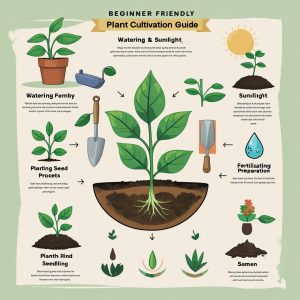Creating your own cannabis strain is one of the most rewarding challenges in cultivation. Breeding allows you to select the best traits from different plants —like flavor, potency, resistance, and growth structure—and combine them into a unique genetic line. Whether you’re an experienced grower or an adventurous beginner, understanding the basics of cannabis breeding can open a world of creativity and botanical discovery.
Why Breed Cannabis?
Breeding isn’t just for large operations or commercial growers. Home growers can create custom strains that better suit their environment, preferences, and medicinal needs. Benefits include:
- Selecting desirable phenotypes (e.g., yield, terpene profile, resistance)
- Developing rare or exclusive flavors
- Creating strains tailored to specific effects
The Basics of Cannabis Genetics
Cannabis is a dioecious plant, meaning male and female flowers grow on separate plants. Breeding involves:
Selecting two parent plants:
One male (pollen donor) and one female (flower producer)
Cross-pollinating them
To produce seeds that express a mix of genetic traits
Phenotype hunting
Through these seeds to find offspring with the desired qualities
Steps to Breeding Your Own Strain
1. Choose Strong Parent Plants
Pick stable, healthy specimens with traits you want to replicate. Consider potency, smell, yield, flowering time, and resilience.
Female (mother):
Known for its buds and cannabinoid profile
Male (father):
Chosen for structural traits and resilience
2. Isolate the Male and Female
Prevent accidental pollination by keeping males away from other flowering females.
- Use a separate tent or room for breeding
- Ensure proper air filtration if working indoors
3. Collect and Apply Pollen
When the male’s pollen sacs open, collect pollen and apply it to female flowers using a soft brush or manually shaking pollen onto select branches.
- Timing: Apply during early to mid-flowering (weeks 2–4)
- Label pollinated branches for seed tracking
4. Harvest Seeds
Seeds mature within 4–6 weeks after pollination.
- Wait until calyxes swell and begin to dry
- Remove and cure seeds in a dry, cool place for 2–3 weeks
5. Phenotype Hunting (Pheno-Hunting)
Grow out a batch of seeds and monitor for differences in:
- Size and structure
- Aroma and taste
- Potency and effect
Select your favorite phenotypes and stabilize them through further breeding (backcrossing or inbreeding) to fix traits.
Stabilizing a New Strain
Stabilization ensures your strain consistently expresses key traits in future generations. This takes:
- Multiple breeding cycles (F1, F2, etc.)
- Backcrossing (breeding offspring with a parent plant)
- Cloning standout phenotypes for genetic consistency
This process can take several generations but results in reliable, reproducible plants.
Best Practices for Breeders
Keep detailed records
Of traits, conditions, and breeding outcomes
Work with clean genetics
From reputable seed banks
Prevent cross-contamination
With strict environmental controls
Start small
And refine your process before scaling


